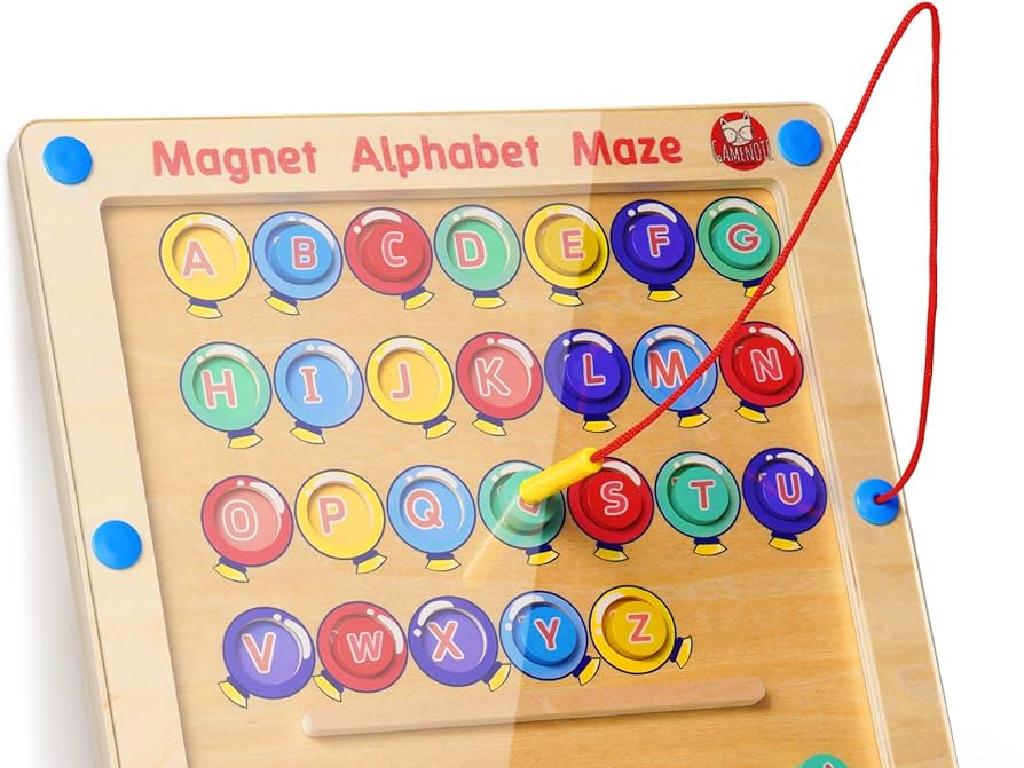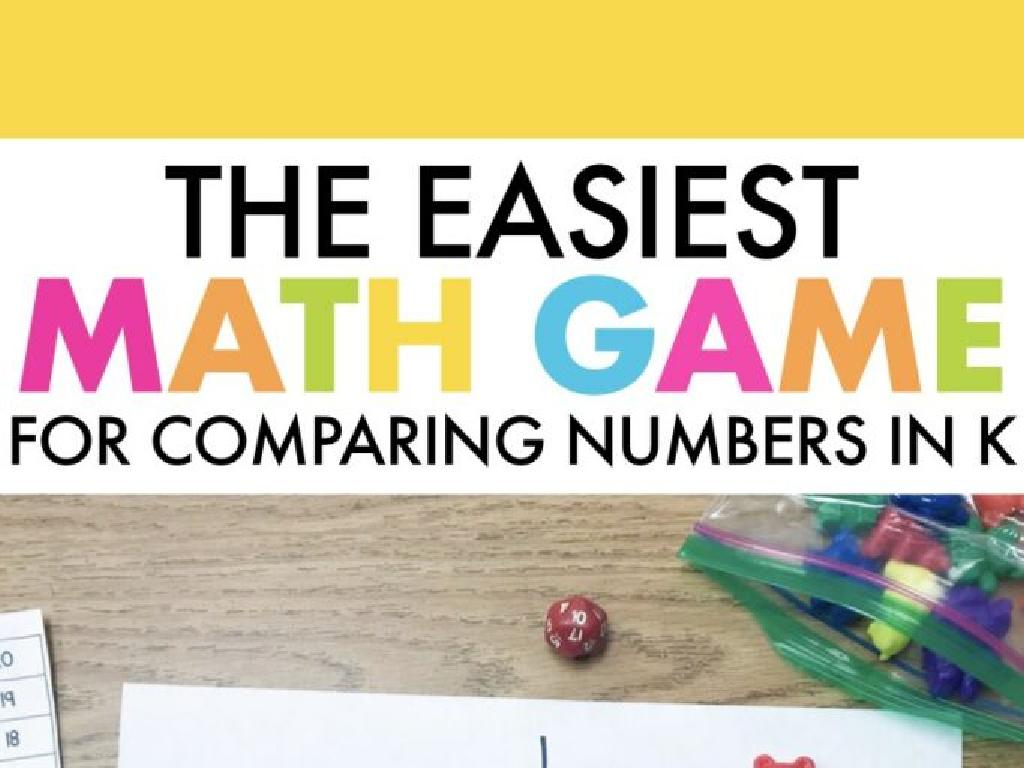Division Facts For 6, 7, 8, And 9
Subject: Math
Grade: Third grade
Topic: Division Fluency Up To 10
Please LOG IN to download the presentation. Access is available to registered users only.
View More Content
Welcome to Division: Sharing Equally
– Division facts for 6, 7, 8, and 9
– Division means equal sharing
– If you have 9 cookies and 3 friends, how do you share?
– Imagine sharing cookies evenly
– Each friend gets the same number of cookies
– Practice with division problems
– We’ll solve problems to see how it works!
|
This slide introduces the concept of division as a form of equal sharing, which is a relatable and tangible way for third graders to understand division. Start by explaining division facts for 6, 7, 8, and 9, and then connect the concept to a real-world scenario like sharing cookies. This helps students visualize the process of division. Encourage them to think of division as a fair way to distribute items evenly among a certain number of people or groups. Provide several examples and practice problems to reinforce the concept. The goal is for students to become comfortable with division facts and to understand the practical application of division in everyday life.
Understanding Division
– Division: A basic math operation
– It shows repeated subtraction
– How many times can 6 be subtracted from 12?
– Example: 12 ÷ 6 equals 2
– 12 cookies shared by 6 friends, each gets 2
– Practice with 6, 7, 8, and 9
– Use objects like counters to divide into groups
|
This slide introduces the concept of division to third-grade students. Division is explained as one of the four fundamental operations in mathematics, which essentially tells us how many times one number can be subtracted from another. Use everyday examples, such as dividing a set of items like cookies among a group of people, to illustrate the concept. Emphasize the division facts for 6, 7, 8, and 9, as these are the focus for this lesson. Encourage students to use physical objects like counters to practice dividing into equal groups, which will help them visualize the division process. Prepare to have students practice with simple division problems involving these numbers to build their fluency.
Mastering Division Facts for 6
– Understanding division with 6
– Sharing equally among friends
– If you have items and share them equally, that’s division!
– 18 apples divided by 6
– How many apples does each friend get if we start with 18?
– Each friend gets 3 apples
– 18 ÷ 6 = 3, so each friend gets 3 apples.
|
This slide introduces the concept of division using the number 6. Start by explaining division as a method of sharing things equally. Use the example of sharing 18 apples with 6 friends to make it relatable and easy to visualize. Show that when we divide 18 apples by 6 friends, each friend gets 3 apples. Emphasize that 18 divided by 6 equals 3. Encourage students to think of other examples where they might share things equally with 6 people and to practice more division facts involving the number 6.
Mastering Division Facts for 7
– Understanding division by 7
– Visualize with 21 books
– Imagine placing 21 books across 7 shelves evenly
– Divide 21 by 7 equals 3
– Each shelf gets 3 books, showing 21/7 = 3
– Practice with similar examples
– Try 28/7 or 35/7 for more practice
|
This slide is focused on helping students understand division by using the number 7. Start by explaining the concept of division as sharing or grouping equally. Use the example of 21 books that need to be placed equally on 7 shelves to illustrate this point. This visual representation helps students grasp that when 21 is divided by 7, each shelf ends up with 3 books. Encourage students to visualize the process to understand the division better. After explaining, provide additional examples such as 28 divided by 7 and 35 divided by 7 for the students to practice. This reinforces the concept and helps build fluency in division facts for the number 7.
Mastering Division Facts for 8
– Understanding division by 8
– Sharing equally among 8
– If 8 pizzas are split among 8 kids, each gets 1
– 8 divided by 8 equals 1
– It’s like sharing 8 cookies with 8 friends fairly
– Practice with different numbers
– Try 16 ÷ 8 or 24 ÷ 8 for more practice
|
This slide focuses on the concept of division by 8. Start by explaining division as a method of sharing equally. Use relatable examples, such as dividing slices of pizza among a group of kids, to illustrate the concept. Emphasize that when a number is divided by itself, the result is always 1. Encourage students to practice with different numbers divisible by 8 to reinforce the concept. Provide additional examples like dividing 16 or 24 by 8 to help them understand and memorize division facts for 8.
Mastering Division Facts for 9
– Understanding division with 9
– Divide 36 stickers into 9 groups
– If you have 36 stickers and make 9 equal groups, how many stickers in each?
– Each group gets 4 stickers
– It’s like sharing equally among 9 friends
– 36 divided by 9 equals 4
– Remember, 36 ÷ 9 is the same as ‘how many times does 9 go into 36?’
|
This slide focuses on division facts for the number 9. Start by explaining the concept of division as sharing equally. Use the example of dividing 36 stickers into 9 groups to make it relatable and easy to visualize. Emphasize that when we divide something into 9 equal parts, each part represents the number of times 9 can fit into the total. Encourage students to use real-life examples to practice, such as sharing treats or toys with friends. Reinforce the concept by having students work out similar problems with different numbers divisible by 9, ensuring they understand the process and the result.
Practice Time: Division Facts Fun!
– Let’s solve division problems
– Focus on facts for 6, 7, 8, and 9
– Use facts like 6 ÷ 2 = 3 to solve problems
– Think about sharing equally
– If you have 8 cookies and share with 2 friends, how many does each get?
– Work together as a class
|
This slide is designed to engage the class in a collaborative problem-solving activity focused on division facts for 6, 7, 8, and 9. Encourage the students to think of division as sharing equally among a certain number of people or groups. Start with simpler problems to build confidence, then gradually increase the difficulty. Possible activities include: 1) Group work where each group solves different problems and presents their solutions. 2) ‘Division Bingo’ where each student has a card with answers, and you call out division facts. 3) ‘Division Relay’ where students pass a problem around, each solving one step. 4) ‘Division Story Problems’ where students create their own story problems. 5) ‘Beat the Clock’ where students solve as many problems as they can in a set time.
Division Bingo Game
– Receive your Division Bingo card
– Solve division problems on the card
– Use division facts for 6, 7, 8, and 9
– Mark correct answers on your card
– Aim for five correct in a row to win!
|
This interactive class activity is designed to reinforce the students’ understanding of division facts for 6, 7, 8, and 9. Distribute the Bingo cards, each with a variety of division problems. As students solve the problems, they should mark the answers on their cards. The goal is to get five correct answers in a row, either horizontally, vertically, or diagonally. This game encourages quick recall of division facts and provides a fun way to practice. For different levels of ability, consider varying the difficulty of the problems on the Bingo cards. Have small prizes ready for the winners to celebrate their success. This activity not only promotes engagement but also allows you to assess students’ fluency with division facts in a playful setting.






